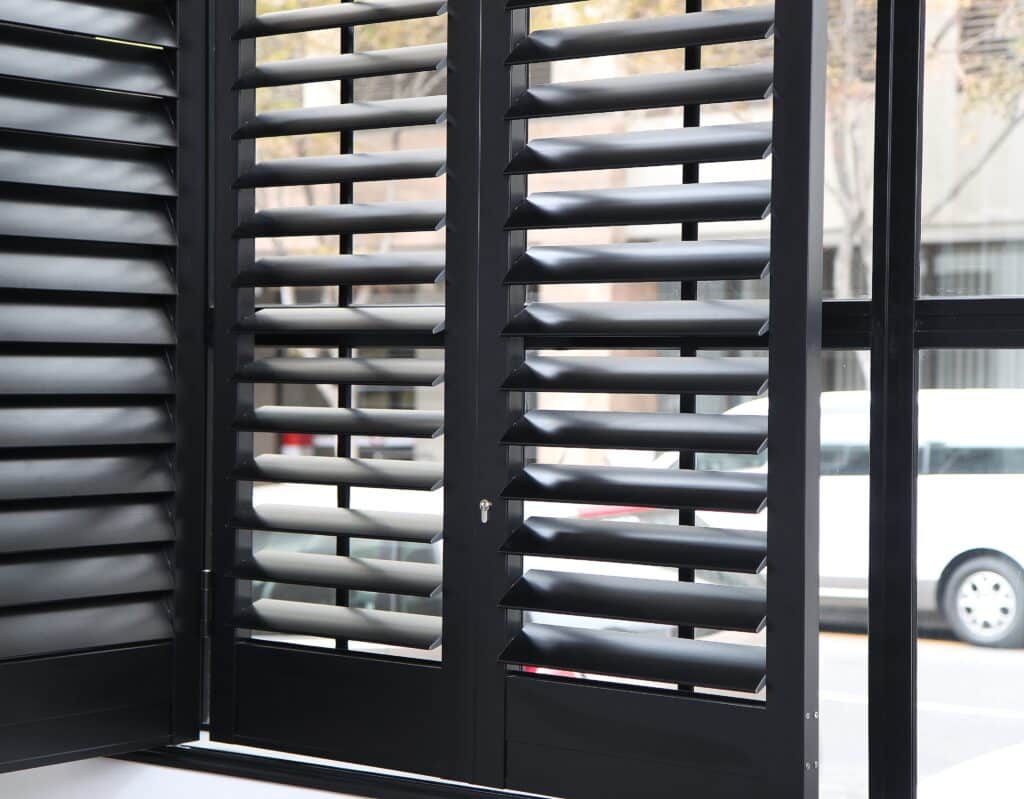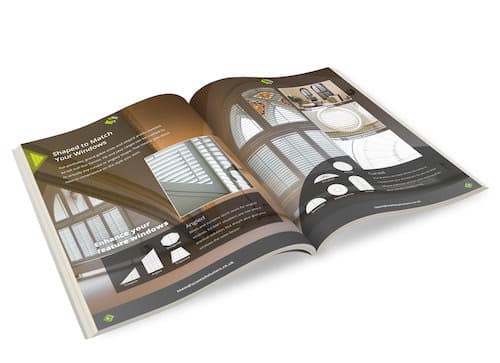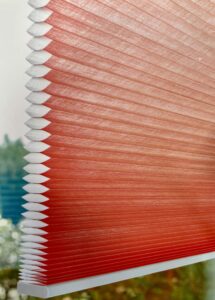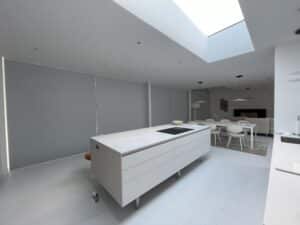It can be a frustrating task to pick out the perfect shutters for your home. Which shutter materials are best? Which materials are right for different rooms? How do you know which option is most suitable for your home?
Making the wrong decision can be a costly mistake, as shutters not only impact the look of your home but also its functionality.
That’s why this blog will help you compare the different shutter material choices – vinyl, wood, and composite – so you can make an informed decision and invest wisely in your home.
Knowing What You Need
Before you dive into choosing the best shutter materials, you first need to consider what it is you’re looking for.
There are some common challenges that homeowners face when choosing their window shutters, including choosing between aesthetics, maintenance and durability. Ideally, the right shutter materials will find the perfect balance. However, there are more factors to consider, such as cost, moisture resistance, and eco-friendly attributes.
We recommend talking through your vision and needs with a shutter expert, ideally a local one, where you can see their full range of shutters. They’ll be able to acknowledge your challenges and must-haves and help you select the best shutter materials that will provide the style and function you need.
Vinyl Shutters
Vinyl shutters are one of the most popular choices. They are made of a specific vinyl material that makes them both affordable and practical.
Benefits:
- Cost-effective: Because of the manufacturing process and material cost, vinyl shutters are typically more affordable than wood or composite shutters, making them ideal for budget-conscious buyers.
- Moisture-resistant: Vinyl is ideal for high-humidity areas such as bathrooms and kitchens, as water isn’t absorbed into the shutters. This also means they’re easy to wipe if you get splashes or stains on them, which is a high possibility with children or pets in the house, or if your shutters are close to appliances like kitchen hobs or bathroom sinks.
- Low maintenance: Easy to clean and resistant to warping and fading, vinyl shutters require minimal upkeep and attention – ideal for those who are looking for a simple, low-demand solution.
Downsides:
- Limited aesthetic appeal: Because of the nature of the material, they have fewer customisation options and may lack the real wood look that makes shutters so beautiful.
- Less durable: Vinyl can be less sturdy than wood and composite materials, so it might not withstand heavy use as well as the other options can.
Wood Shutters
Wood shutters are made from real wood, such as oak, teak, and birch, which are selected for their timeless look and incredible strength.
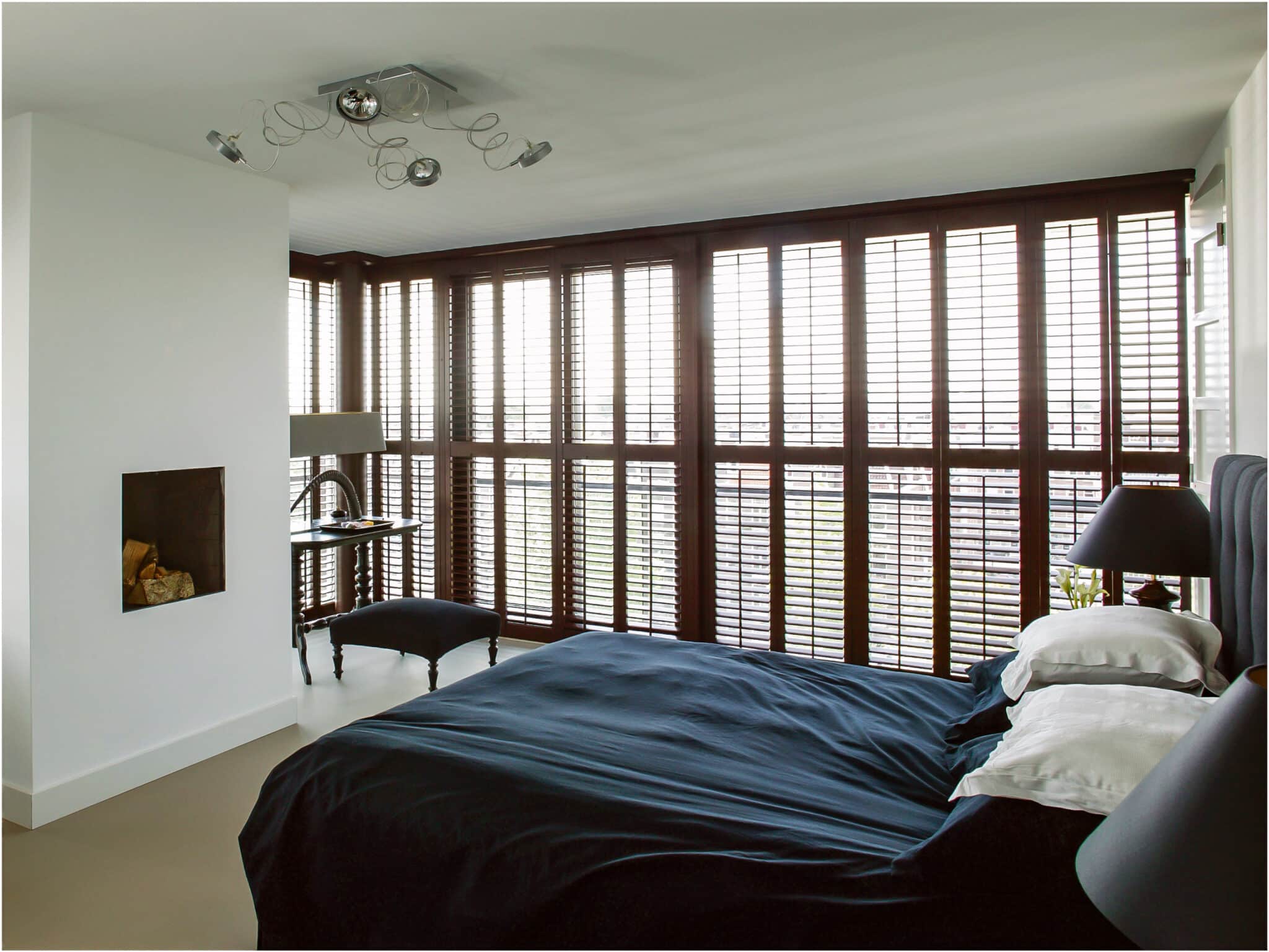
Benefits:
- Aesthetic appeal: Wood shutters offer a timeless, elegant look that enhances any interior design choice. They can add a touch of sophistication to a room while still remaining subtle.
- Customisable: Available in various finishes, stains, and styles to match your decor, real wooden shutters can be tailored to perfectly match your decor choices. You can choose from a wide range of wood types, letting the natural grains and textures enhance the feel of your home.
- Durability: High-quality wood shutters are long-lasting and resistant to wear and tear. With proper care, your wood shutters can last many years, serving as beautiful, permanent features that can add value to your property.
Downsides:
- Cost: Because of the need for high-quality wood in shutters, they are generally more expensive than vinyl and composite shutters.
- Waterproofing: Wooden shutters aren’t quite as fully waterproofed as vinyl shutters, which don’t absorb moisture at all.
Composite Shutters
Composite shutters are often considered the best of both vinyl shutters and wood shutters. Their synthetic materials can be made to have a realistic appearance of wood while offering the cost benefits of vinyl.
Benefits:
- Versatility: Composite shutters combine the durability of synthetic materials with the look of wood. This means they can be used in places where wood shutters would normally not be recommended, like bathrooms and kitchens.
- Stability: Composite is considered one of the best shutter materials because it’s remarkably resistant to warping, cracking, and fading. That means it can withstand conditions like high humidity and quickly changing temperatures.
- Low maintenance: Composite shutters are similar to vinyl shutters because they’re extraordinarily easy to clean and maintain. You won’t need to refinish them, as they’re resistant to moisture, and any marks can be easily wiped away.
Downsides:
- Cost: Shutters of this material can be more expensive than vinyl, though they’re often a little less than wood shutters. For many homeowners, they still make for a budget-friendly alternative to genuine wood.
- Weight: Composite is heavier than vinyl, which can make installing larger windows a bit trickier. Because of the extra weight, you’ll need more durable mounting hardware and support. That’s why it’s crucial to find a skilled and experienced installation team who knows exactly what to do to get the best results.
Which Are The Best Shutter Materials?
When choosing the best shutter material, it’s important to consider the advantages and disadvantages of vinyl, wood, and composite options. Each material has its own benefits, such as the cost-effectiveness and moisture resistance of vinyl, the classic beauty of wood, and the versatile durability of composite shutters.
Explore our range of shutter materials here or contact us today to learn more about how vinyl, wood, or composite shutters can enhance your home.

